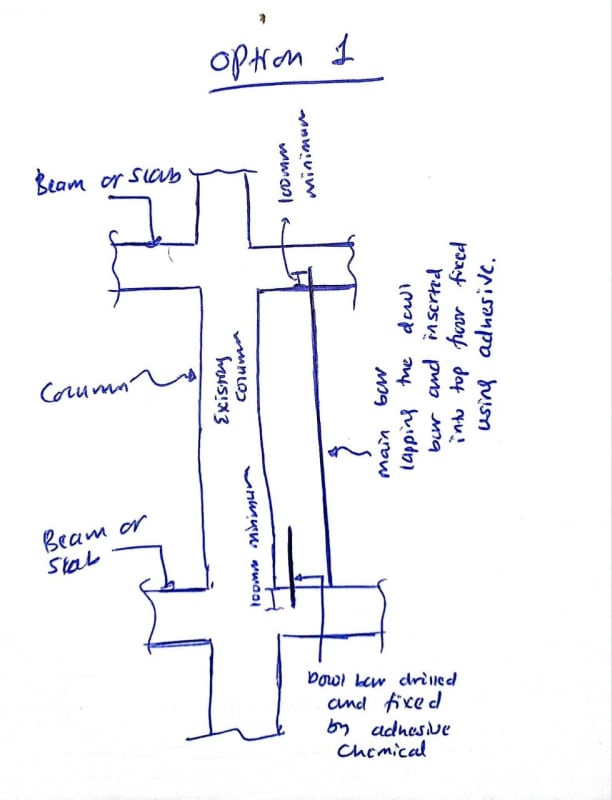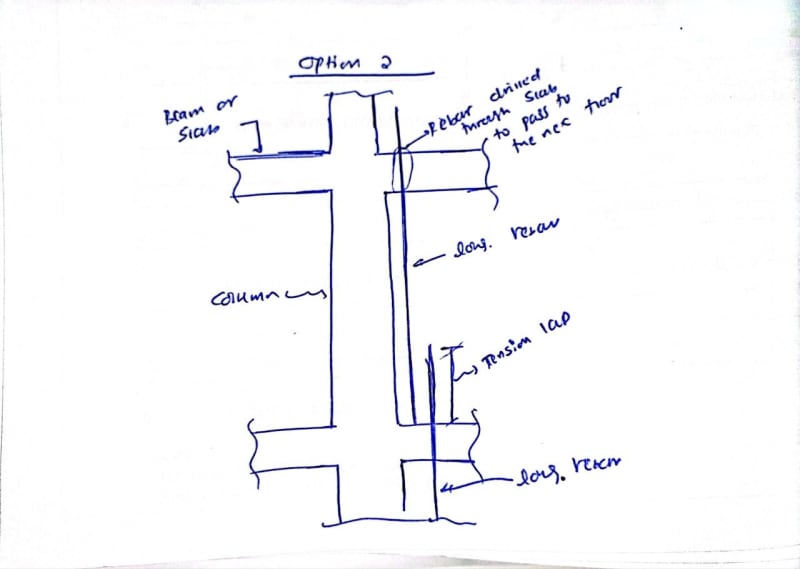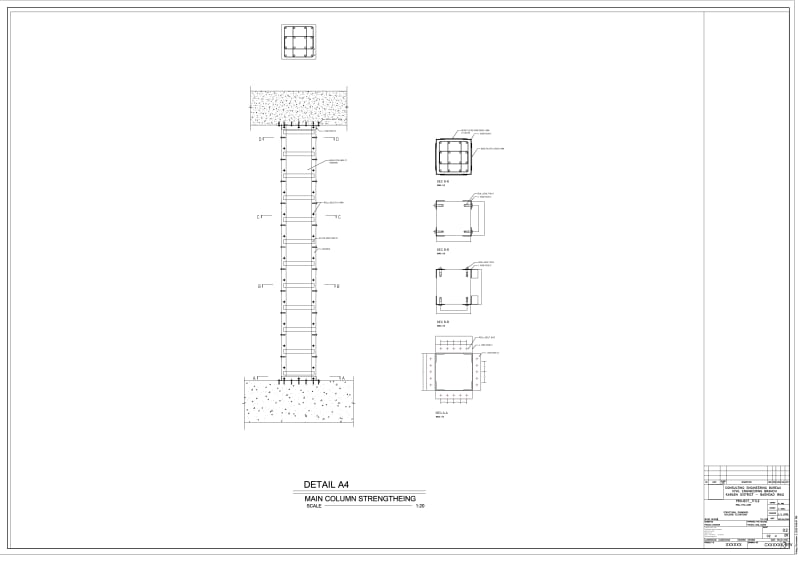Hello guys,
while doing concrete jacketing for an existing column, the new jacketing rebar is it supposed to pass through beam column or slab column joint( option 2 attached picture) or drilling like 100mm or so and imbedding it with adhesive is sufficient(option 1 attached picture)? the jacketing case is for a building where the client is interested in increasing the number of stories for an existing building. the columns majorly carry gravity loads since the building is sufficiently braced by shear walls.


while doing concrete jacketing for an existing column, the new jacketing rebar is it supposed to pass through beam column or slab column joint( option 2 attached picture) or drilling like 100mm or so and imbedding it with adhesive is sufficient(option 1 attached picture)? the jacketing case is for a building where the client is interested in increasing the number of stories for an existing building. the columns majorly carry gravity loads since the building is sufficiently braced by shear walls.



